【k8s深入学习之 event 记录】初步了解 k8s event 记录机制
event 事件记录初始化
- 一般在控制器都会有如下的初始化函数,初始化 event 记录器等参数
1. 创建 EventBroadcaster
record.NewBroadcaster(): 创建事件广播器,用于记录和分发事件。StartLogging(klog.Infof): 将事件以日志的形式输出。StartRecordingToSink: 将事件发送到 Kubernetes API Server,存储为Event资源。
2. 创建 EventRecorder
NewRecorder(scheme, source)从广播器中创建事件记录器。scheme: 用于验证和序列化资源。source: 指定事件的来源(如example-controller)。
import "k8s.io/client-go/tools/record"func (c *controller) Initialize(opt *framework.ControllerOption) error {// ...// 1. 创建事件广播器 eventBroadcastereventBroadcaster := record.NewBroadcaster()// 将 event 记录到 logeventBroadcaster.StartLogging(klog.Infof)// 将 event 记录到 apiserver// c.kubeClient.CoreV1().Events("") 这个是创建一个可以操作任意 ns 下 event 的 clienteventBroadcaster.StartRecordingToSink(&corev1.EventSinkImpl{Interface: c.kubeClient.CoreV1().Events("")})// 2. 基于事件广播器 创建事件记录器 Recorderc.recorder = eventBroadcaster.NewRecorder(versionedscheme.Scheme, v1.EventSource{Component: "example-controller"})
}// 事件的记录
const Create-Reason = "PodCreate"
func (c *controller)Controller_Do_Something(pod *corev1.Pod){newPod:= pod.DeepCopy()// 生成个 event,并记录// 内容为 newPod 创建成功,event等级为 Normal,Reason 是 PodCreate,Message 是 Create Pod succeed// 之后 Recorder 内的 eventBroadcaster 会将此 event 广播出去,然后 eventBroadcaster 之前注册的日志记录和event存储逻辑会执行// 日志记录逻辑,会通过 klog.Infof 将此 event 打印出来// event存储逻辑,会将此 event 存储到 apiserverc.recorder.Event(newPod, v1.EventTypeNormal, Create-Reason, "Create Pod succeed")
}
源码解析
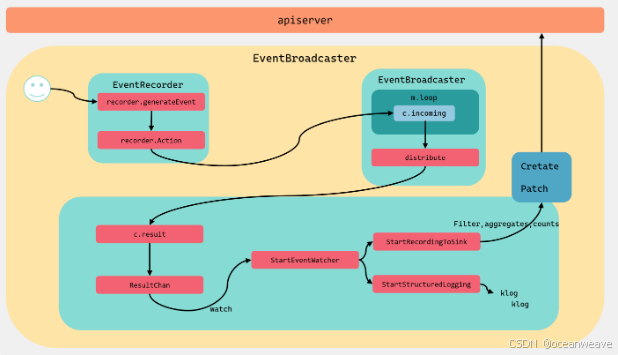
0- 总体逻辑设计
-
控制中心 Broadcaster
-
eventBroadcaster := record.NewBroadcaster()创建一个公共数据源(或理解为总控中心,也可以称之为控制器,但不是k8s 控制器)- 返回的是
eventBroadcasterImpl结构体,其封装了Broadcaster结构体,因此eventBroadcasterImpl结构体的字段很丰富
- 返回的是
-
Broadcaster中的字段主要记录处理 event 的监听者watchers,以及分发的控制等eventBroadcaster.StartLogging(klog.Infof)就是一个watchereventBroadcaster.StartRecordingToSink(&corev1.EventSinkImpl{Interface: c.kubeClient.CoreV1().Events("")})也是个watcher- 这些
watcher都会被记录到Broadcaster结构体的watchers map[int64]*broadcasterWatcher的map 中
-
eventBroadcasterImpl在Broadcaster基础上增加少量配置参数和控制函数
-
-
Event 分发和 watcher 处理逻辑
eventBroadcaster := record.NewBroadcaster()执行过程中会调用watch.NewLongQueueBroadcaster(maxQueuedEvents, watch.DropIfChannelFull)函数,其会开启 event 分发逻辑go m.loop()go m.loop()用于处理 event 的分发,读取eventBroadcasterImpl中incoming chan Event通道传来的 event,分发给各个 watcher 的resultchannelincoming中的 event 是由Recorder写入的,Recorder.Event会生成个 event ,并发送到incomimgchannel 中go m.loop()函数会读取incoming通道中的 Event,发送个各个watcher, 然后各个watcher执行自己的逻辑(如记录为 info级别日志、或写入apiserver等)
- 同时为了避免主进程的结束导致
go m.loop()进程结束,NewLongQueueBroadcaster还利用distributing sync.WaitGroup变量,进行m.distributing.Add(1),让主进程等待(避免主进程快速结束,导致 loop 进程结束)
StartLogging或StartRecordingToSink函数会调用StartEventWatcher函数,StartEventWatcher函数将传入的参数变为一个 event处理函数eventHandler,StartEventWatcher函数同时会开启一个 go 协程,读取各自 watcherresultchannel 中的 event,之后用eventHandler进行处理(如记录为 info级别日志、或写入apiserver等)
-
Event 产生逻辑
-
Recorder是由eventBroadcaster.NewRecorder创建出来的,相当于对eventBroadcasterImpl中Broadcaster的封装 -
Recorder.Event会生成个 event ,并发送到incomimgchannel 中-
Recorder会利用Broadcaster的incomingchannel 写入 event -
Recorder会利用Broadcaster的incomingBlock,控制写入时的并发,避免同一时间写入 event 过多导致错乱(这部分逻辑在blockQueue函数中)
-
-
1- 控制中心的创建 —— NewBroadcaster 函数
- 创建的
eventBroadcaster,实际上就是创建一个eventBroadcasterImpl结构体,并传入一些配置参数进行初始化 - 注意
eventBroadcasterImpl封装了Broadcaster结构体- 注意
Broadcaster中有很多channel、watchers和分发相关控制、并发控制字段等eventBroadcaster.StartLogging(klog.Infof)就是一个watchereventBroadcaster.StartRecordingToSink(&corev1.EventSinkImpl{Interface: c.kubeClient.CoreV1().Events("")})也是个watcher- 这些
watcher都会被记录到watchers map[int64]*broadcasterWatcher的map 中
- 基于
eventBroadcaster创建的Recorder,实际上级就是对eventBroadcasterImpl结构体的封装 - 之后
Recorder创建 event 时,会传入到eventBroadcasterImpl内Broadcaster
- 注意
// 路径 mod/k8s.io/client-go@v0.29.0/tools/record/event.go
const maxQueuedEvents = 1000
type FullChannelBehavior int
const (WaitIfChannelFull FullChannelBehavior = iotaDropIfChannelFull
)// Creates a new event broadcaster.
func NewBroadcaster(opts ...BroadcasterOption) EventBroadcaster {c := config{sleepDuration: defaultSleepDuration,}for _, opt := range opts {opt(&c)}// 重点关注eventBroadcaster := &eventBroadcasterImpl{Broadcaster: watch.NewLongQueueBroadcaster(maxQueuedEvents, watch.DropIfChannelFull),sleepDuration: c.sleepDuration,options: c.CorrelatorOptions,}ctx := c.Contextif ctx == nil {ctx = context.Background()} else {// Calling Shutdown is not required when a context was provided:// when the context is canceled, this goroutine will shut down// the broadcaster.go func() {<-ctx.Done()eventBroadcaster.Broadcaster.Shutdown()}()}eventBroadcaster.cancelationCtx, eventBroadcaster.cancel = context.WithCancel(ctx)// 重点关注return eventBroadcaster
}// 路径 mod/k8s.io/apimachinery@v0.29.0/pkg/watch/mux.go
// NewLongQueueBroadcaster functions nearly identically to NewBroadcaster,
// except that the incoming queue is the same size as the outgoing queues
// (specified by queueLength).
func NewLongQueueBroadcaster(queueLength int, fullChannelBehavior FullChannelBehavior) *Broadcaster {m := &Broadcaster{watchers: map[int64]*broadcasterWatcher{},incoming: make(chan Event, queueLength),stopped: make(chan struct{}),watchQueueLength: queueLength,fullChannelBehavior: fullChannelBehavior,}m.distributing.Add(1) // distributing sync.WaitGroup, 1 个进程go m.loop() // loop 进程,很关键! 处理 event 的分发,分发给 watcher 处理 return m
}
1.1- eventBroadcasterImpl 结构体
// 路径 mod/k8s.io/client-go@v0.29.0/tools/record/event.go
type eventBroadcasterImpl struct {*watch.Broadcaster // 此处引用下面的结构体sleepDuration time.Durationoptions CorrelatorOptionscancelationCtx context.Contextcancel func()
}// 路径 /mod/k8s.io/apimachinery@v0.29.0/pkg/watch/mux.go
// Broadcaster distributes event notifications among any number of watchers. Every event
// is delivered to every watcher.
type Broadcaster struct {watchers map[int64]*broadcasterWatcher // map 结构 id 和 watcher 的映射nextWatcher int64 // 下一个 watcher 该分配的 iddistributing sync.WaitGroup // 用于保证分发函数 loop 正常运行,避免主函数停止,导致 loop 函数停止// incomingBlock allows us to ensure we don't race and end up sending events// to a closed channel following a broadcaster shutdown.incomingBlock sync.Mutex // 避免接收 event 时,event 过多导致的并发,因此需要锁进行控制incoming chan Event // 承接生成的 event,其他 watcher 会从此 channel 中读取 event 进行记录到 apiserver 或日志打印等stopped chan struct{} // 承接关闭广播器 Broadcaster 的停止信号// How large to make watcher's channel.watchQueueLength int// If one of the watch channels is full, don't wait for it to become empty.// Instead just deliver it to the watchers that do have space in their// channels and move on to the next event.// It's more fair to do this on a per-watcher basis than to do it on the// "incoming" channel, which would allow one slow watcher to prevent all// other watchers from getting new events.fullChannelBehavior FullChannelBehavior
}
1.2- EventBroadcaster 接口
// 路径 mod/k8s.io/client-go@v0.29.0/tools/record/event.go
// EventBroadcaster knows how to receive events and send them to any EventSink, watcher, or log.
type EventBroadcaster interface {// StartEventWatcher starts sending events received from this EventBroadcaster to the given// event handler function. The return value can be ignored or used to stop recording, if// desired.StartEventWatcher(eventHandler func(*v1.Event)) watch.Interface// StartRecordingToSink starts sending events received from this EventBroadcaster to the given// sink. The return value can be ignored or used to stop recording, if desired.StartRecordingToSink(sink EventSink) watch.Interface// StartLogging starts sending events received from this EventBroadcaster to the given logging// function. The return value can be ignored or used to stop recording, if desired.StartLogging(logf func(format string, args ...interface{})) watch.Interface// StartStructuredLogging starts sending events received from this EventBroadcaster to the structured// logging function. The return value can be ignored or used to stop recording, if desired.StartStructuredLogging(verbosity klog.Level) watch.Interface// NewRecorder returns an EventRecorder that can be used to send events to this EventBroadcaster// with the event source set to the given event source.NewRecorder(scheme *runtime.Scheme, source v1.EventSource) EventRecorderLogger// Shutdown shuts down the broadcaster. Once the broadcaster is shut// down, it will only try to record an event in a sink once before// giving up on it with an error message.Shutdown()
}
1.3- NewRecorder 接口的实现
- Recorder 封装了 Broadcaster
// 路径 mod/k8s.io/client-go@v0.29.0/tools/record/event.go// NewRecorder returns an EventRecorder that records events with the given event source.
func (e *eventBroadcasterImpl) NewRecorder(scheme *runtime.Scheme, source v1.EventSource) EventRecorderLogger {return &recorderImplLogger{recorderImpl: &recorderImpl{scheme, source, e.Broadcaster, clock.RealClock{}}, logger: klog.Background()}
}type recorderImplLogger struct {*recorderImpllogger klog.Logger
}type recorderImpl struct {scheme *runtime.Schemesource v1.EventSource*watch.Broadcasterclock clock.PassiveClock
}
1.3- loop(event的分发)
// // 路径 /mod/k8s.io/apimachinery@v0.29.0/pkg/watch/mux.go
// loop receives from m.incoming and distributes to all watchers.
func (m *Broadcaster) loop() {// Deliberately not catching crashes here. Yes, bring down the process if there's a// bug in watch.Broadcaster.for event := range m.incoming {if event.Type == internalRunFunctionMarker {event.Object.(functionFakeRuntimeObject)()continue}m.distribute(event) // 将 event 分发给 watcher}m.closeAll()m.distributing.Done()
}// distribute sends event to all watchers. Blocking.
func (m *Broadcaster) distribute(event Event) {if m.fullChannelBehavior == DropIfChannelFull {for _, w := range m.watchers {select {case w.result <- event: // 将 event 发送到 watcher 的 result channel,等待 watcher 进行处理case <-w.stopped:default: // Don't block if the event can't be queued.}}} else {for _, w := range m.watchers {select {case w.result <- event:case <-w.stopped:}}}
}
1.4 event 的产生
// 路径 mod/k8s.io/client-go@v0.29.0/tools/record/event.go// EventRecorder knows how to record events on behalf of an EventSource.
type EventRecorder interface {// Event constructs an event from the given information and puts it in the queue for sending.// 'object' is the object this event is about. Event will make a reference-- or you may also// pass a reference to the object directly.// 'eventtype' of this event, and can be one of Normal, Warning. New types could be added in future// 'reason' is the reason this event is generated. 'reason' should be short and unique; it// should be in UpperCamelCase format (starting with a capital letter). "reason" will be used// to automate handling of events, so imagine people writing switch statements to handle them.// You want to make that easy.// 'message' is intended to be human readable.//// The resulting event will be created in the same namespace as the reference object.Event(object runtime.Object, eventtype, reason, message string)// Eventf is just like Event, but with Sprintf for the message field.Eventf(object runtime.Object, eventtype, reason, messageFmt string, args ...interface{})// AnnotatedEventf is just like eventf, but with annotations attachedAnnotatedEventf(object runtime.Object, annotations map[string]string, eventtype, reason, messageFmt string, args ...interface{})
}func (recorder *recorderImpl) Event(object runtime.Object, eventtype, reason, message string) {recorder.generateEvent(klog.Background(), object, nil, eventtype, reason, message)
}func (recorder *recorderImpl) generateEvent(logger klog.Logger, object runtime.Object, annotations map[string]string, eventtype, reason, message string) {ref, err := ref.GetReference(recorder.scheme, object)if err != nil {logger.Error(err, "Could not construct reference, will not report event", "object", object, "eventType", eventtype, "reason", reason, "message", message)return}if !util.ValidateEventType(eventtype) {logger.Error(nil, "Unsupported event type", "eventType", eventtype)return}event := recorder.makeEvent(ref, annotations, eventtype, reason, message)event.Source = recorder.sourceevent.ReportingInstance = recorder.source.Hostevent.ReportingController = recorder.source.Component// NOTE: events should be a non-blocking operation, but we also need to not// put this in a goroutine, otherwise we'll race to write to a closed channel// when we go to shut down this broadcaster. Just drop events if we get overloaded,// and log an error if that happens (we've configured the broadcaster to drop// outgoing events anyway).sent, err := recorder.ActionOrDrop(watch.Added, event)if err != nil {logger.Error(err, "Unable to record event (will not retry!)")return}if !sent {logger.Error(nil, "Unable to record event: too many queued events, dropped event", "event", event)}
}// Action distributes the given event among all watchers, or drops it on the floor
// if too many incoming actions are queued up. Returns true if the action was sent,
// false if dropped.
func (m *Broadcaster) ActionOrDrop(action EventType, obj runtime.Object) (bool, error) {m.incomingBlock.Lock()defer m.incomingBlock.Unlock()// Ensure that if the broadcaster is stopped we do not send events to it.select {case <-m.stopped:return false, fmt.Errorf("broadcaster already stopped")default:}select {case m.incoming <- Event{action, obj}:return true, nildefault:return false, nil}
}
1.5 watcher 的处理
eventBroadcaster.StartLogging(klog.Infof)// StartLogging starts sending events received from this EventBroadcaster to the given logging function.
// The return value can be ignored or used to stop recording, if desired.
func (e *eventBroadcasterImpl) StartLogging(logf func(format string, args ...interface{})) watch.Interface {return e.StartEventWatcher(func(e *v1.Event) { // 对应 下面 eventHandlerlogf("Event(%#v): type: '%v' reason: '%v' %v", e.InvolvedObject, e.Type, e.Reason, e.Message)})
}// StartEventWatcher starts sending events received from this EventBroadcaster to the given event handler function.
// The return value can be ignored or used to stop recording, if desired.
func (e *eventBroadcasterImpl) StartEventWatcher(eventHandler func(*v1.Event)) watch.Interface {watcher, err := e.Watch()if err != nil {klog.FromContext(e.cancelationCtx).Error(err, "Unable start event watcher (will not retry!)")}go func() { // 直接运行了defer utilruntime.HandleCrash()for {select {case <-e.cancelationCtx.Done():watcher.Stop()returncase watchEvent := <-watcher.ResultChan(): // 从 watcher result channel 中取出 event event, ok := watchEvent.Object.(*v1.Event)if !ok {// This is all local, so there's no reason this should// ever happen.continue}eventHandler(event) // 对 event 进行处理 }}}()return watcher
}附录1 | 示例详解
以下是一个完整的 EventRecorder 和 EventBroadcaster 实例化的代码示例,展示如何在 Kubernetes 控制器中记录事件。代码包含详细注释,适合用于实际开发或学习:
代码示例
package mainimport ("context""fmt""time"corev1 "k8s.io/api/core/v1""k8s.io/apimachinery/pkg/runtime"metav1 "k8s.io/apimachinery/pkg/runtime/schema""k8s.io/client-go/kubernetes""k8s.io/client-go/kubernetes/fake""k8s.io/client-go/tools/record""k8s.io/client-go/util/workqueue""k8s.io/klog/v2"
)// 主要逻辑的入口
func main() {// 1. 创建 Kubernetes 客户端// 这里我们使用 fake 客户端进行演示,生产环境应替换为真实的 `kubernetes.Clientset`clientset := fake.NewSimpleClientset()// 2. 创建事件广播器(EventBroadcaster)// 事件广播器是事件处理的核心,负责分发事件到日志和 API ServereventBroadcaster := record.NewBroadcaster()// 3. 启动日志记录功能// 通过 `klog.Infof` 输出事件到控制台或日志文件eventBroadcaster.StartLogging(klog.Infof)// 4. 启动事件的 API Server 记录功能// 配置事件接收器,将事件发送到 API Server,通过 `kubeClient.CoreV1().Events` 接口记录事件eventBroadcaster.StartRecordingToSink(&corev1.EventSinkImpl{Interface: clientset.CoreV1().Events(""),})// 5. 创建事件记录器(EventRecorder)// EventRecorder 用于开发者实际记录事件recorder := eventBroadcaster.NewRecorder(scheme(), // 提供资源的模式信息,常用的是 `runtime.NewScheme()` 或自定义的 schemecorev1.EventSource{Component: "example-controller"},)// 6. 模拟一个 Kubernetes 对象(如 Pod)的引用// 事件通常需要与具体的 Kubernetes 资源关联objRef := &corev1.ObjectReference{Kind: "Pod", // 资源类型Namespace: "default", // 命名空间Name: "example-pod", // 资源名称UID: "12345-abcde-67890", // 唯一标识符APIVersion: "v1", // API 版本}// 7. 使用 EventRecorder 记录事件// 记录一个正常类型的事件(EventTypeNormal)recorder.Eventf(objRef, corev1.EventTypeNormal, "PodCreated", "Successfully created Pod %s", objRef.Name)// 模拟一个警告事件(EventTypeWarning)recorder.Eventf(objRef, corev1.EventTypeWarning, "PodFailed", "Failed to create Pod %s due to insufficient resources", objRef.Name)// 模拟一个控制器逻辑的操作processQueue(recorder, objRef)// 等待事件记录完成time.Sleep(2 * time.Second)
}// 模拟处理队列的函数
func processQueue(recorder record.EventRecorder, objRef *corev1.ObjectReference) {// 创建一个工作队列queue := workqueue.NewRateLimitingQueue(workqueue.DefaultControllerRateLimiter())// 将任务添加到队列queue.Add("task1")// 模拟处理队列中的任务for queue.Len() > 0 {item, _ := queue.Get()defer queue.Done(item)// 记录一个事件,表明任务已处理recorder.Eventf(objRef, corev1.EventTypeNormal, "TaskProcessed", "Successfully processed task: %v", item)fmt.Printf("Processed task: %v\n", item)}
}// 创建 Scheme 用于事件记录器
// Scheme 是 Kubernetes 中资源的模式定义,用于确定资源类型和序列化方式
func scheme() *runtime.Scheme {s := runtime.NewScheme()// 添加 CoreV1 资源到 Scheme 中corev1.AddToScheme(s)metav1.AddToGroupVersion(s, schema.GroupVersion{Version: "v1"})return s
}
代码详解
1. 创建 EventBroadcaster
record.NewBroadcaster(): 创建事件广播器,用于记录和分发事件。StartLogging(klog.Infof): 将事件以日志的形式输出。StartRecordingToSink: 将事件发送到 Kubernetes API Server,存储为Event资源。
2. 创建 EventRecorder
NewRecorder(scheme, source)从广播器中创建事件记录器。scheme: 用于验证和序列化资源。source: 指定事件的来源(如example-controller)。
3. 创建对象引用
ObjectReference: 用于标识事件关联的 Kubernetes 资源。包括类型、名称、命名空间、UID 等信息。
4. 记录事件
-
- 用于记录事件,包括:
Eventf- 类型:
corev1.EventTypeNormal(正常)或corev1.EventTypeWarning(警告)。 - 原因:事件发生的原因(如
PodCreated)。 - 消息:事件的详细描述。
5. 模拟队列任务
- 使用
workqueue模拟处理任务,记录任务完成时的事件。
运行结果
日志输出
事件将输出到日志(通过 klog):
I1119 12:34:56.123456 12345 example.go:52] Event(v1.ObjectReference{...}): type: 'Normal' reason: 'PodCreated' message: 'Successfully created Pod example-pod'
I1119 12:34:56.123457 12345 example.go:53] Event(v1.ObjectReference{...}): type: 'Warning' reason: 'PodFailed' message: 'Failed to create Pod example-pod due to insufficient resources'
Processed task: task1
事件存储
如果使用真实客户端,事件会存储在集群中,可通过 kubectl 查看:
kubectl get events
事件输出
LAST SEEN TYPE REASON OBJECT MESSAGE
5s Normal PodCreated Pod/example-pod Successfully created Pod example-pod
5s Warning PodFailed Pod/example-pod Failed to create Pod example-pod due to insufficient resources
5s Normal TaskProcessed Pod/example-pod Successfully processed task: task1
代码用途
- 日志记录和事件管理: 帮助开发者跟踪控制器的运行状态和资源变更。
- 任务队列处理: 将业务逻辑与事件机制结合,记录每个关键操作的状态。
以上代码展示了如何使用 EventRecorder 和 EventBroadcaster 实现 Kubernetes 控制器中的事件管理,适合用于开发自定义控制器或调试集群事件处理逻辑。
附录2 | stoped 变量的作用
在 NewBroadcaster 函数中的 stopped 通道用于实现对 Broadcaster 对象的停止和关闭控制。具体来说,它的作用是在广播器的生命周期中进行信号传递,用于通知 Broadcaster 是否已经停止运行。
详细分析:
1. 通道的定义:
stopped: make(chan struct{}),
stopped 是一个无缓冲的通道,类型为 struct{}。无缓冲的通道用于信号传递,表示某个事件的发生,而不需要传递具体数据。这里的 struct{} 是一个空结构体,占用零内存,因此不会传递任何实际数据。
2. 停止广播器的作用:
stopped 通道用于在广播器停止时传递一个信号。通常这种信号用于通知相关的 goroutine 或者处理流程,广播器已经停止工作,可以做一些清理操作或者退出。
3. 与 go m.loop() 的配合:
go m.loop()
在 NewBroadcaster 中,启动了一个新的 goroutine 来执行 m.loop()。这个 loop 方法通常是处理传入事件并进行分发的核心逻辑。loop 方法可能会定期检查 stopped 通道,判断是否已经收到停止信号。
4. 典型的停止逻辑(假设)
func (m *Broadcaster) loop() {for {select {case event := <-m.incoming:// 处理事件逻辑case <-m.stopped:// 收到停止信号后,退出 goroutinereturn}}
}
在这个假设的 loop 实现中,select 语句等待从 m.incoming 通道接收事件,或者等待 stopped 通道的信号。当收到 stopped 通道的信号时,loop 方法退出,从而停止事件的分发。
5. 停止广播器的触发:
在实际代码中,某个外部操作可能会通过 close(m.stopped) 或者发送一个信号到 m.stopped 通道,来通知 Broadcaster 停止工作。比如在处理完所有事件或者发生错误时,可能会调用停止操作:
close(m.stopped)
或者
m.stopped <- struct{}{}
这样 loop 就会检测到停止信号并退出。
总结
stopped 通道在 Broadcaster 中的作用是提供一个停止信号,通知正在运行的 goroutine(如 loop 方法)停止执行。这种设计使得 Broadcaster 能够优雅地处理停止操作,确保所有 goroutine 都能够适时退出并清理资源。
相关文章:

【k8s深入学习之 event 记录】初步了解 k8s event 记录机制
event 事件记录初始化 一般在控制器都会有如下的初始化函数,初始化 event 记录器等参数 1. 创建 EventBroadcaster record.NewBroadcaster(): 创建事件广播器,用于记录和分发事件。StartLogging(klog.Infof): 将事件以日志的形式输出。StartRecording…...

redhat 7.9配置阿里云yum源
1、mv /etc/yum.repos.d/*.repo /etc/yum.repos.d/backup/ 2、添加dns vim/etc/resolv.conf nameserver 8.8.8.8 nameserver 8.8.4.4 nameserver 114.114.114.114 #配置完先检查下通不通 3、vi /etc/yum/pluginconf.d/subscription-manager.conf # 将 “enabled1” 改为 “ena…...

深入探索Flax:一个用于构建神经网络的灵活和高效库
深入探索Flax:一个用于构建神经网络的灵活和高效库 在深度学习领域,TensorFlow 和 PyTorch 作为主流的框架,已被广泛使用。不过,Flax 作为一个较新的库,近年来得到了越来越多的关注。Flax 是一个由Google Research团队…...

Nginx auth_request详解
网上看到多篇先关文章,觉得很不错,这里合并记录一下,仅供学习参考。 模块 nginx-auth-request-module 该模块是nginx一个安装模块,使用配置都比较简单,只要作用是实现权限控制拦截作用。默认高版本nginx(比…...
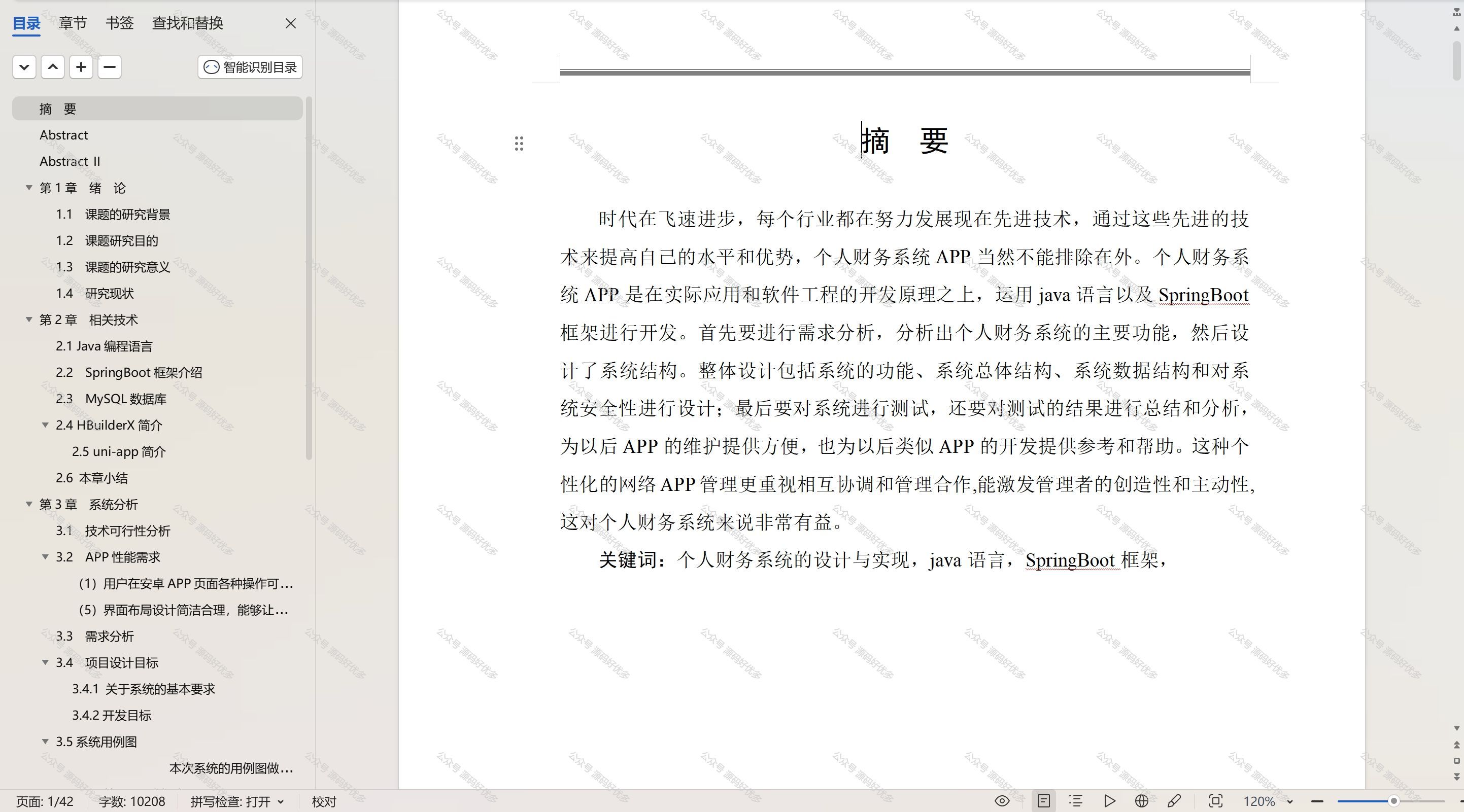
基于Java Springboot个人财务APP且微信小程序
一、作品包含 源码数据库设计文档万字PPT全套环境和工具资源部署教程 二、项目技术 前端技术:Html、Css、Js、Vue、Element-ui 数据库:MySQL 后端技术:Java、Spring Boot、MyBatis 三、运行环境 开发工具:IDEA/eclipse 微信…...
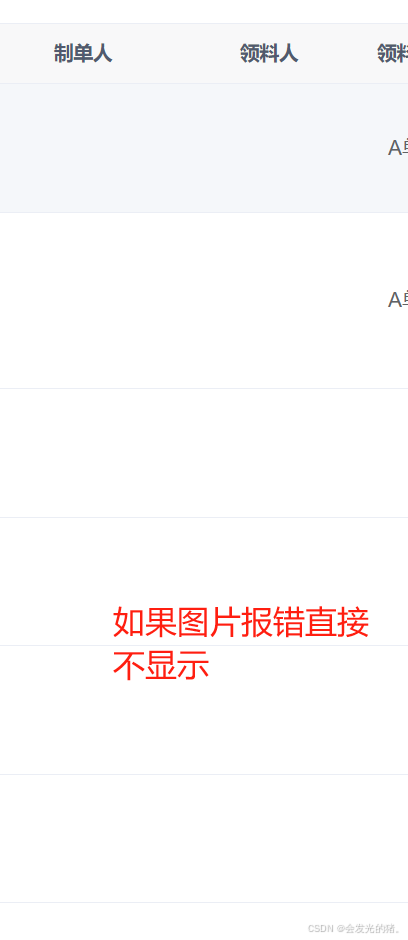
vue3图片报错转换为空白不显示的方法
vue3图片报错转换为空白不显示的方法 直接上代码: <el-table-column label"领料人" align"center"><template #default"scope"><el-imagev-if"scope.row.receiver":src"scope.row.receiver"style…...
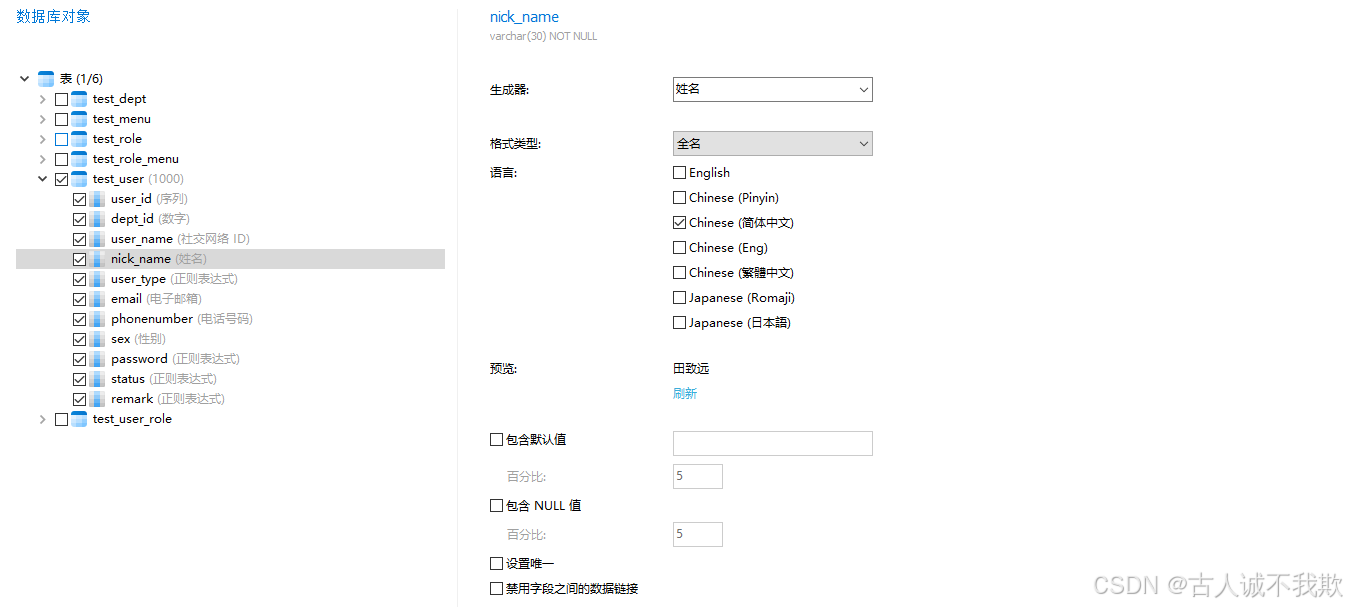
mysq之快速批量的插入生成数据
mysq之快速批量的插入生成数据 1.insert inot select2.存储过程3.借助工具 在日常测试工作时,有时候需要某张表有大量的数据,如:需要有几百个系统中的用户账号等情况;因此,记录整理,如何快速的在表中插入生…...

浅谈C#库之DevExpress
一、DevExpress库介绍 DevExpress是一个功能强大、界面美观的UI组件库,广泛应用于桌面应用程序和Web应用程序的开发中。它提供了丰富的控件和工具,帮助开发人员快速构建现代化的用户界面。DevExpress控件库以其功能丰富、应用简便、界面华丽以及方便定制…...
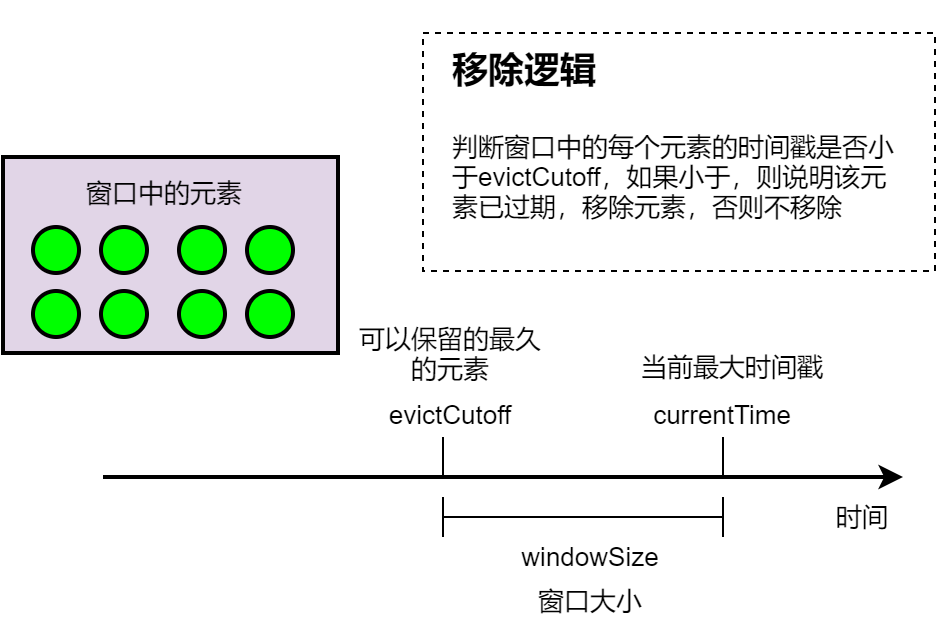
聊聊Flink:这次把Flink的触发器(Trigger)、移除器(Evictor)讲透
一、触发器(Trigger) Trigger 决定了一个窗口(由 window assigner 定义)何时可以被 window function 处理。 每个 WindowAssigner 都有一个默认的 Trigger。 如果默认 trigger 无法满足你的需要,你可以在 trigger(…) 调用中指定自定义的 tr…...

一款支持80+语言,包括:拉丁文、中文、阿拉伯文、梵文等开源OCR库
大家好,今天给大家分享一个基于PyTorch的OCR库EasyOCR,它允许开发者通过简单的API调用来读取图片中的文本,无需复杂的模型训练过程。 项目介绍 EasyOCR 是一个基于Python的开源项目,它提供了一个简单易用的光学字符识别ÿ…...
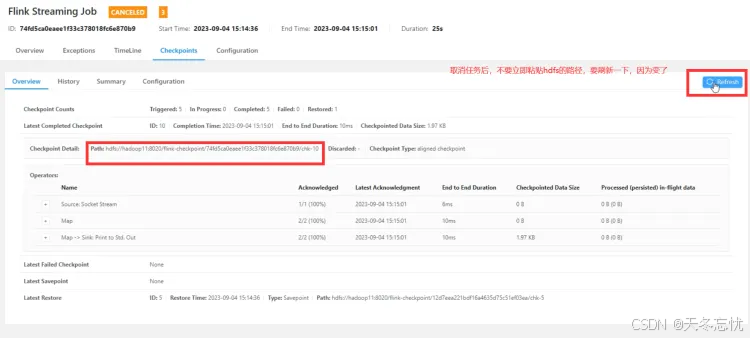
Flink四大基石之CheckPoint(检查点) 的使用详解
目录 一、Checkpoint 剖析 State 与 Checkpoint 概念区分 设置 Checkpoint 实战 执行代码所需的服务与遇到的问题 二、重启策略解读 重启策略意义 代码示例与效果展示 三、SavePoint 与 Checkpoint 异同 操作步骤详解 四、总结 在大数据流式处理领域,Ap…...
)
JVM 常见面试题及解析(2024)
目录 一、JVM 基础概念 二、JVM 内存结构 三、类加载机制 四、垃圾回收机制 五、性能调优 六、实战问题 七、JVM 与其他技术结合 八、JVM 内部机制深化 九、JVM 相关概念拓展 十、故障排查与异常处理 一、JVM 基础概念 1、什么是 JVM?它的主要作用是…...

Python 调用 Umi-OCR API 批量识别图片/PDF文档数据
目录 一、需求分析 二、方案设计(概要/详细) 三、技术选型 四、OCR 测试 Demo 五、批量文件识别完整代码实现 六、总结 一、需求分析 市场部同事进行采购或给客户报价时,往往基于过往采购合同数据,给出现在采购或报价的金额…...

K8S资源之secret资源
secret资源介绍 secret用于敏感数据存储,底层基于base64编码,数据存储在etcd数据库中 应用场景举例: 数据库的用户名,密码,tls的证书ssh等服务的相关证书 secret的基础管理 1 在命令行响应式创建 1.响应式创建 …...

QT:信号和槽01
QT中什么是信号和槽 概念解释 在 Qt 中,信号(Signals)和槽(Slots)是一种用于对象间通信的机制。信号是对象发出的事件通知,而槽是接收并处理这些通知的函数。 例如,当用户点击一个按钮时&#…...

针对Qwen-Agent框架的Function Call及ReAct的源码阅读与解析:Agent基类篇
文章目录 Agent继承链Agent类总体架构初始化方法`__init__` 方法:`_init_tool` 方法:对话生成方法`_call_llm` 方法:工具调用方法`_call_tool` 方法:`_detect_tool` 方法:整体执行方法`run` 方法:`_run` 方法:`run_nonstream` 方法总结回顾本文在 基于Qwen-Agent框架的Functio…...

XML 查看器:深入理解与高效使用
XML 查看器:深入理解与高效使用 XML(可扩展标记语言)是一种用于存储和传输数据的标记语言。它通过使用标签来定义数据结构,使得数据既易于人类阅读,也易于机器解析。在本文中,我们将探讨 XML 查看器的功能、重要性以及如何高效使用它们。 什么是 XML 查看器? XML 查看…...

《Vue零基础入门教程》第十五课:样式绑定
往期内容 《Vue零基础入门教程》第六课:基本选项 《Vue零基础入门教程》第八课:模板语法 《Vue零基础入门教程》第九课:插值语法细节 《Vue零基础入门教程》第十课:属性绑定指令 《Vue零基础入门教程》第十一课:事…...

以AI算力助推转型升级,暴雨亮相CCF中国存储大会
2024年11月29日-12月1日,CCF中国存储大会(CCF ChinaStorage 2024)在广州市长隆国际会展中心召开。本次会议以“存力、算力、智力”为主题,由中国计算机学会(CCF)主办,中山大学计算机学院、CCF信…...

【VMware】Ubuntu 虚拟机硬盘扩容教程(Ubuntu 22.04)
引言 想装个 Anaconda,发现 Ubuntu 硬盘空间不足。 步骤 虚拟机关机 编辑虚拟机设置 扩展硬盘容量 虚拟机开机 安装 gparted sudo apt install gparted启动 gparted sudo gparted右键sda3,调整分区大小 新大小拉满 应用全部操作 调整完成...

生成xcframework
打包 XCFramework 的方法 XCFramework 是苹果推出的一种多平台二进制分发格式,可以包含多个架构和平台的代码。打包 XCFramework 通常用于分发库或框架。 使用 Xcode 命令行工具打包 通过 xcodebuild 命令可以打包 XCFramework。确保项目已经配置好需要支持的平台…...

《Playwright:微软的自动化测试工具详解》
Playwright 简介:声明内容来自网络,将内容拼接整理出来的文档 Playwright 是微软开发的自动化测试工具,支持 Chrome、Firefox、Safari 等主流浏览器,提供多语言 API(Python、JavaScript、Java、.NET)。它的特点包括&a…...

算法笔记2
1.字符串拼接最好用StringBuilder,不用String 2.创建List<>类型的数组并创建内存 List arr[] new ArrayList[26]; Arrays.setAll(arr, i -> new ArrayList<>()); 3.去掉首尾空格...

佰力博科技与您探讨热释电测量的几种方法
热释电的测量主要涉及热释电系数的测定,这是表征热释电材料性能的重要参数。热释电系数的测量方法主要包括静态法、动态法和积分电荷法。其中,积分电荷法最为常用,其原理是通过测量在电容器上积累的热释电电荷,从而确定热释电系数…...
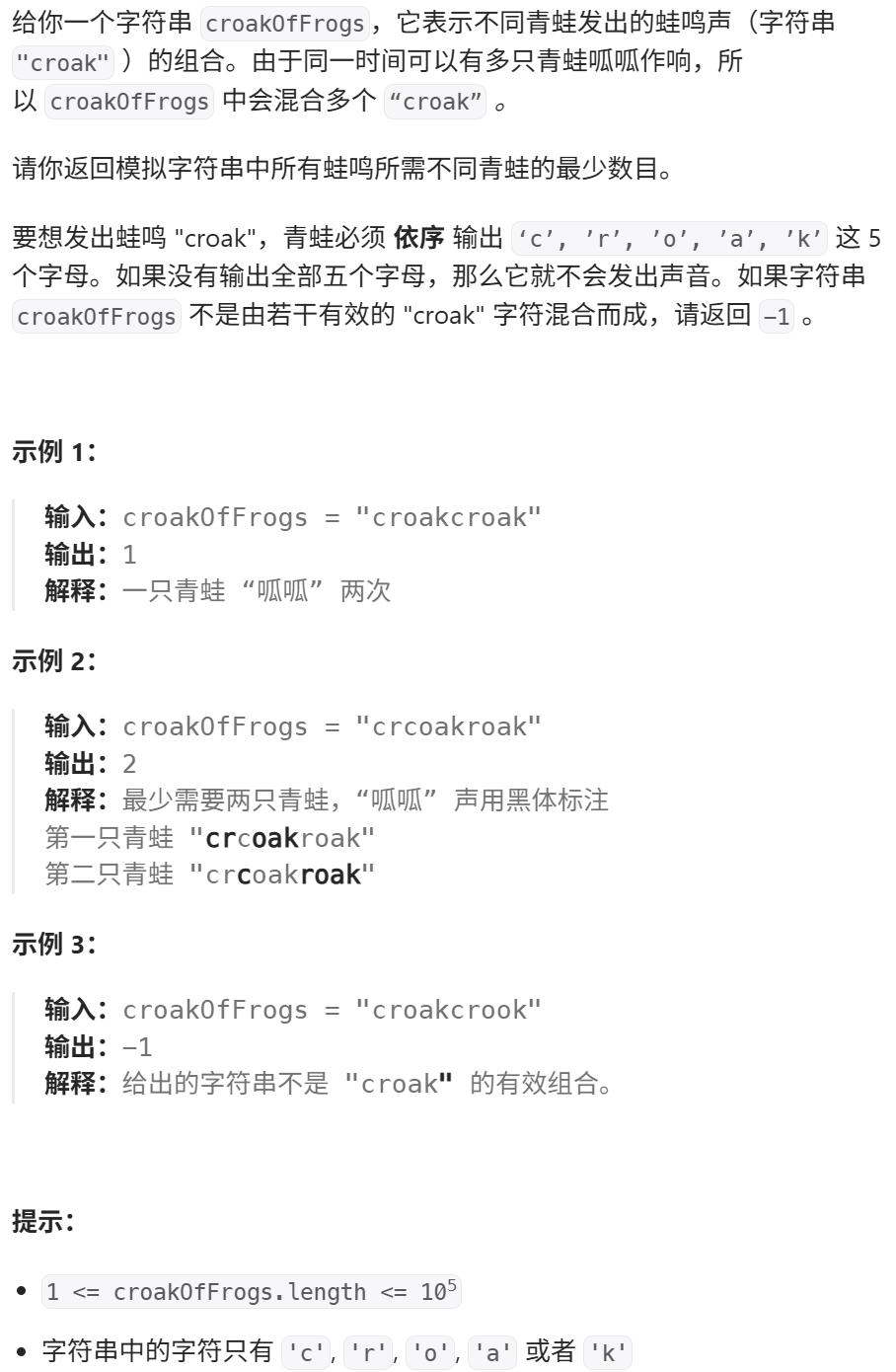
算法:模拟
1.替换所有的问号 1576. 替换所有的问号 - 力扣(LeetCode) 遍历字符串:通过外层循环逐一检查每个字符。遇到 ? 时处理: 内层循环遍历小写字母(a 到 z)。对每个字母检查是否满足: 与…...

Golang——6、指针和结构体
指针和结构体 1、指针1.1、指针地址和指针类型1.2、指针取值1.3、new和make 2、结构体2.1、type关键字的使用2.2、结构体的定义和初始化2.3、结构体方法和接收者2.4、给任意类型添加方法2.5、结构体的匿名字段2.6、嵌套结构体2.7、嵌套匿名结构体2.8、结构体的继承 3、结构体与…...
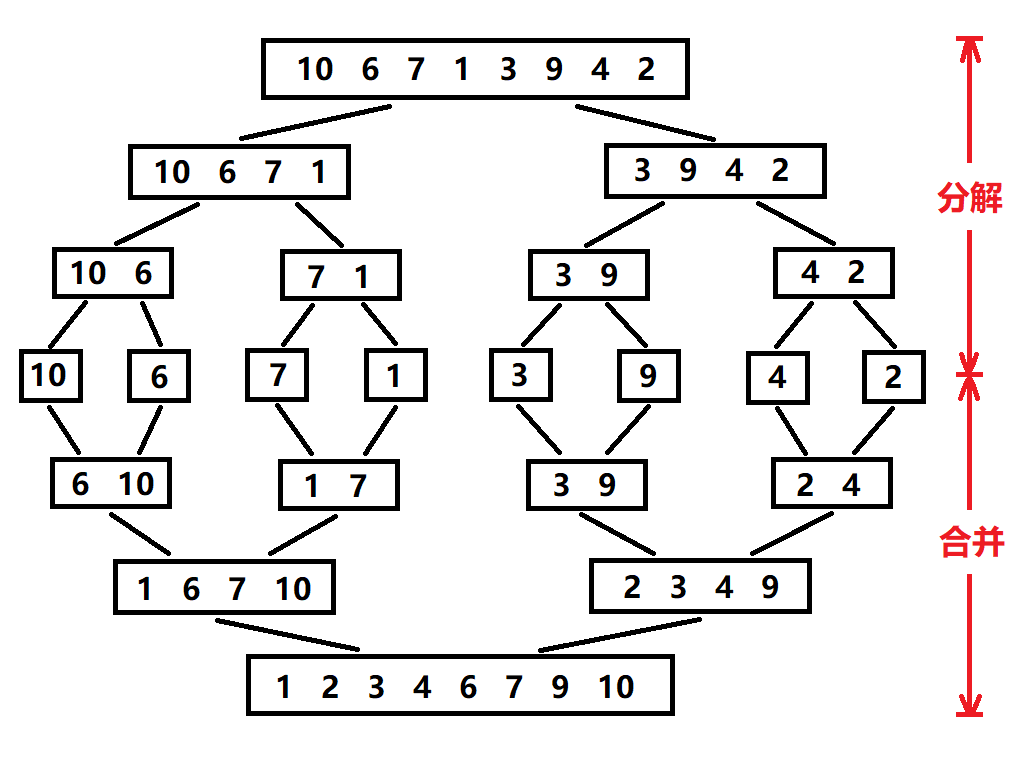
归并排序:分治思想的高效排序
目录 基本原理 流程图解 实现方法 递归实现 非递归实现 演示过程 时间复杂度 基本原理 归并排序(Merge Sort)是一种基于分治思想的排序算法,由约翰冯诺伊曼在1945年提出。其核心思想包括: 分割(Divide):将待排序数组递归地分成两个子…...

拟合问题处理
在机器学习中,核心任务通常围绕模型训练和性能提升展开,但你提到的 “优化训练数据解决过拟合” 和 “提升泛化性能解决欠拟合” 需要结合更准确的概念进行梳理。以下是对机器学习核心任务的系统复习和修正: 一、机器学习的核心任务框架 机…...

用js实现常见排序算法
以下是几种常见排序算法的 JS实现,包括选择排序、冒泡排序、插入排序、快速排序和归并排序,以及每种算法的特点和复杂度分析 1. 选择排序(Selection Sort) 核心思想:每次从未排序部分选择最小元素,与未排…...
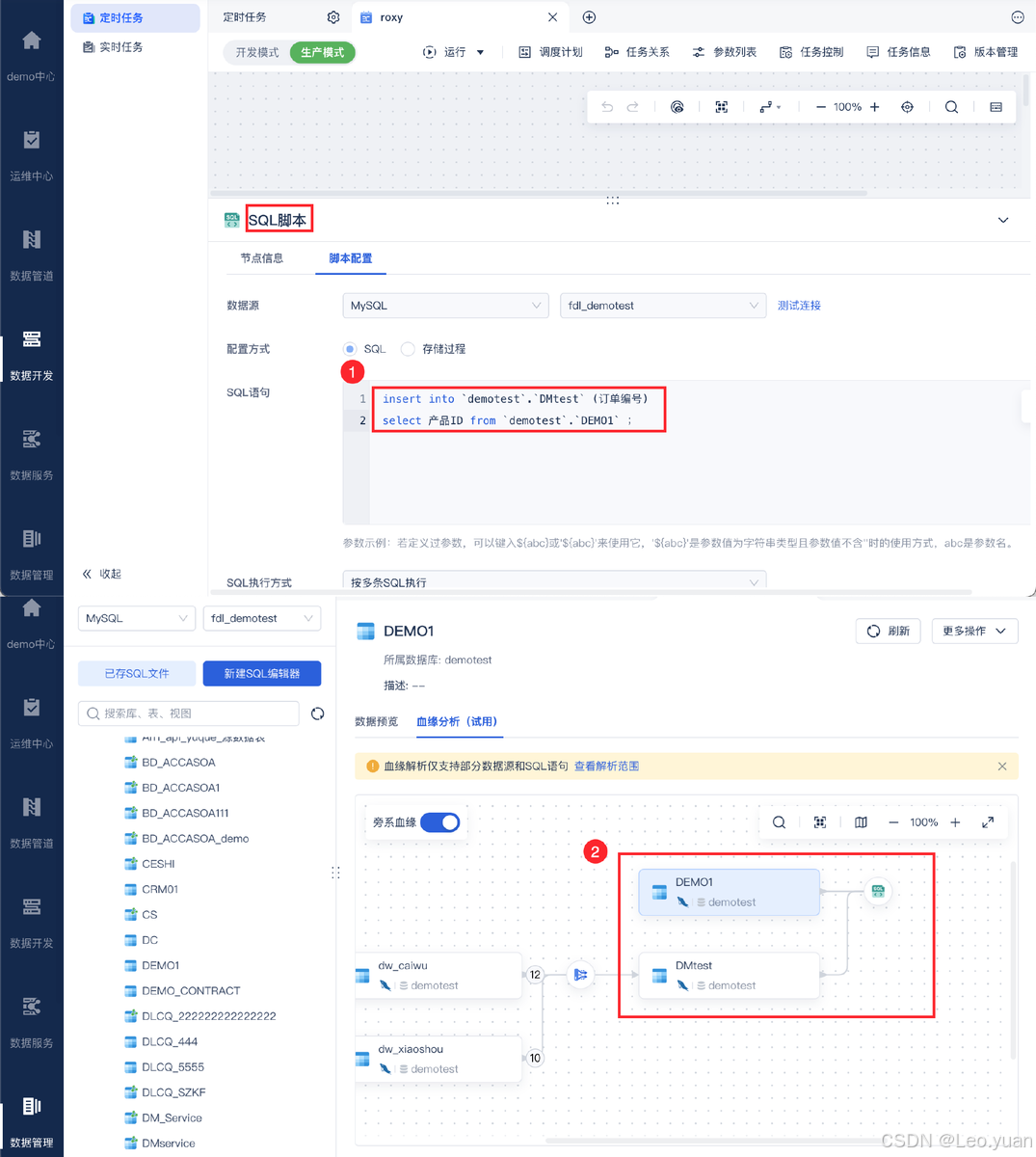
数据挖掘是什么?数据挖掘技术有哪些?
目录 一、数据挖掘是什么 二、常见的数据挖掘技术 1. 关联规则挖掘 2. 分类算法 3. 聚类分析 4. 回归分析 三、数据挖掘的应用领域 1. 商业领域 2. 医疗领域 3. 金融领域 4. 其他领域 四、数据挖掘面临的挑战和未来趋势 1. 面临的挑战 2. 未来趋势 五、总结 数据…...
